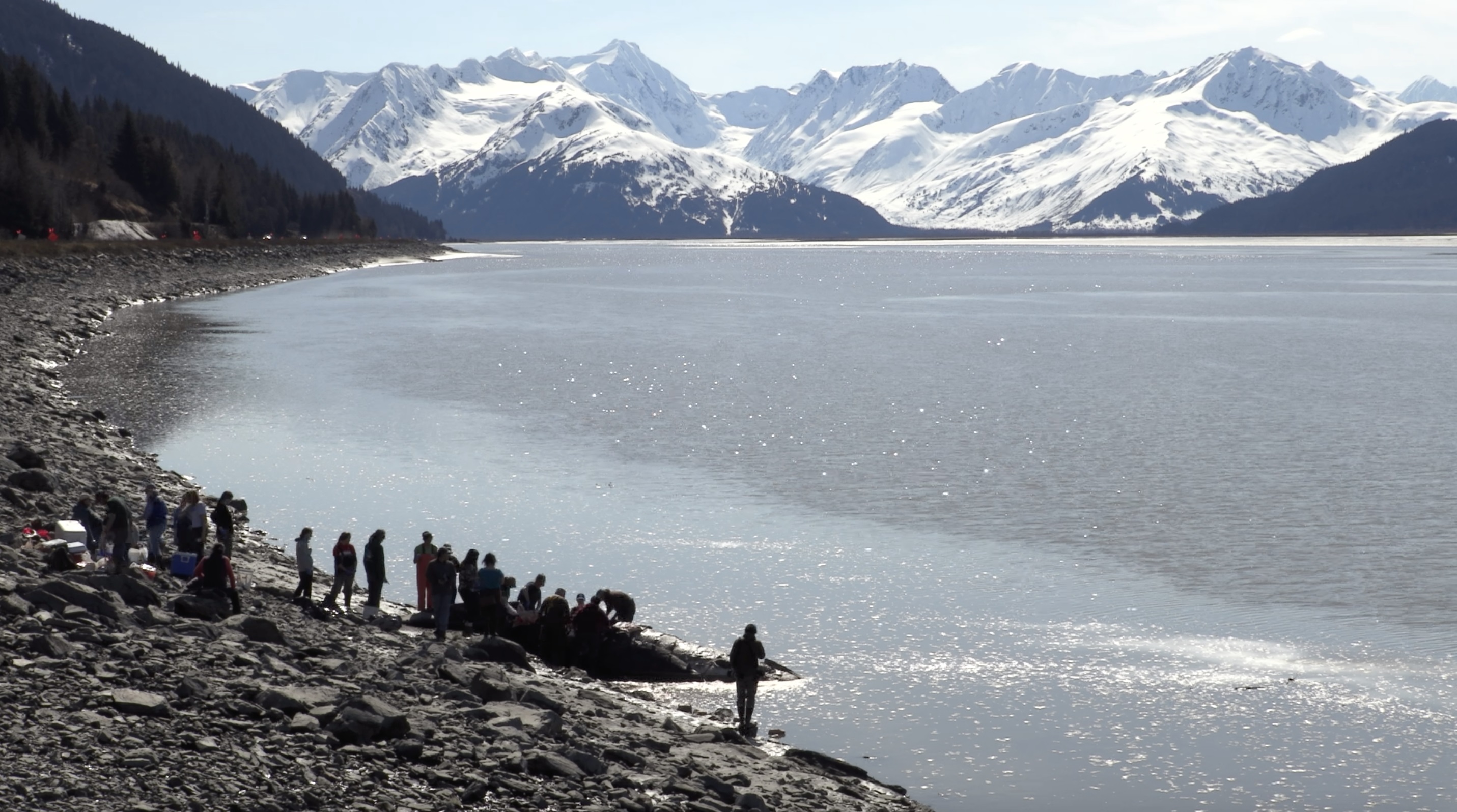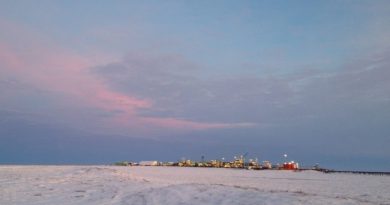Southcentral Alaska: In death, beached humpack whale offers clues, research samples, food

A humpback whale that beached in Turnagain Arm south of Anchorage near Girdwood, in southcentral Alaska, has died. Biologists say it is an uncommon location for a humpback and they are now studying its death.
The whale became stranded Sunday and again Monday. It appeared to free itself Monday night but its body washed ashore Tuesday a few miles away from where it had first beached. On Wednesday, researchers carefully took measurements and samples, and subsistence users harvested blubber for food.
The whale looks to be two years old or a little younger, according to Kathy Burek, a veterinary pathologist and part of the National Marine Fisheries Service team investigating the whale’s death.
The researchers are still looking at what caused its death, but Burek said she thinks the whale might have been following fish or smaller whales that are better-suited for the narrow, shallow channels of Upper Cook Inlet.
“I really think the most likely thing is this is just a really young animal. Maybe it followed the hooligan up or a bunch of Belugas,” Burek said. “So I think he just got a little confused and headed up the arm and he just got lost and and can’t get out.”

Samples taken from the whale can answer a variety of questions, including how stressed the whale had been in its final days or, looking at its genetics, how it is related to other whales, Burek said. They might not find a specific cause of death, she said, but there are still many research projects that will benefit from studying samples from the whale.
That includes a researcher in California who is hoping to get the whale’s entire head, which Burek guessed weighs more than a ton.
“Because he wants to get it into a freezer and then do an MRI, or a scan, of the entire head to try to look at the anatomy of a Mysticeti, or a baleen whale, head,” Burek said.
If it’s even possible, Burek said, the whale head would have to be hauled up a rocky embankment with heavy equipment. Testing of other, easier-to-get samples is already underway.
Related stories from around the North:
Canada: Tracking beluga whales in the Beaufort Sea through Facebook, CBC News
Finland: Report lists hundreds more species as endangered in Finland, Yle News
Iceland: Scientists puzzled by right whale’s appearance off Iceland, CBC News
Norway: Icelandic whale sanctuary can’t offer safe haven to beluga freed from harness, Radio Canada International



